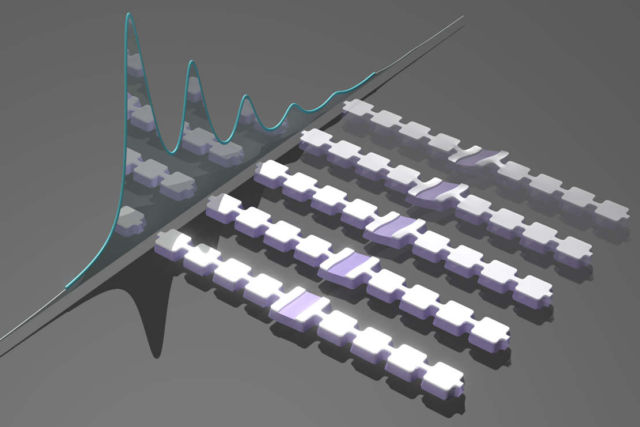Stanford physicists have developed a “quantum microphone” so sensitive that it can measure individual particles of sound, called phonons.
The new device could eventually lead to smaller, more efficient quantum computers that operate by manipulating sound rather than light.
Study leader Amir Safavi-Naeini, an assistant professor of applied physics at Stanford’s School of Humanities and Sciences, said:
“We expect this device to allow new types of quantum sensors, transducers and storage devices for future quantum machines.
Sound has this granularity that we don’t normally experience. Sound, at the quantum level, crackles.”
Above, artist’s impression of an array of nanomechanical resonators designed to generate and trap sound particles, or phonons. The mechanical motions of the trapped phonons are sensed by a qubit detector, which shifts its frequency depending on the number of phonons in a resonator. Different phonon numbers are visible as distinct peaks in the qubit spectrum, which are shown schematically behind the resonators. Image credit Wentao Jiang
First proposed by Albert Einstein in 1907, phonons are packets of vibrational energy emitted by jittery atoms. These indivisible packets, or quanta, of motion manifest as sound or heat, depending on their frequencies.
Like photons, which are the quantum carriers of light, phonons are quantized, meaning their vibrational energies are restricted to discrete values – similar to how a staircase is composed of distinct steps.
The energy of a mechanical system can be represented as different “Fock” states – 0, 1, 2, and so on – based on the number of phonons it generates. For example, a “1 Fock state” consist of one phonon of a particular energy, a “2 Fock state” consists of two phonons with the same energy, and so on. Higher phonon states correspond to louder sounds.
The device detailed July 24 in the journal Nature.
source Stanford University






Leave A Comment